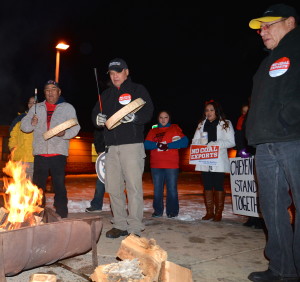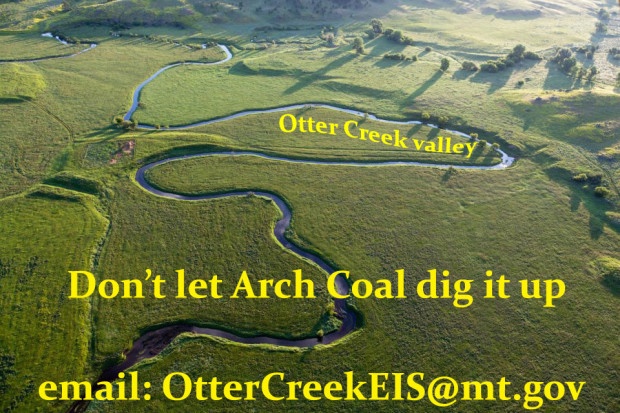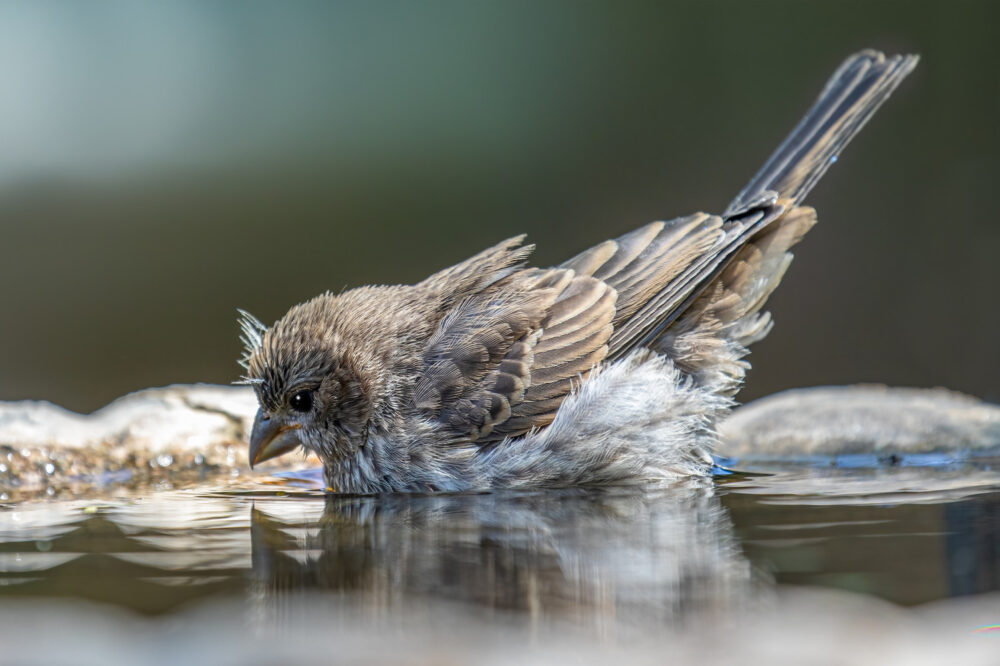We have much more to do and your continued support is needed now more than ever.
Northern Cheyenne Tribal Members Demand Comprehensive Study of the Otter Creek Coal Mine
Yesterday more than 170 Northern Cheyenne tribal members submitted detailed and substantive comments to the Montana Department of Environmental Quality (DEQ) asking for a thorough, transparent and comprehensive study of the proposed Otter Creek coal mine in southeastern Montana. Tribal members said that the DEQ must consider the environmental, social and cultural impacts of the mine in addition to the impacts from the proposed Tongue River Railroad meant to haul that coal out of the valley.

Cheyenne’s Speak Out

“We believe our community will bear the brunt of the negative impacts from the Otter Creek mine. Sacrificing the land, water, animal and plant life for mining and money is not worth what our ancestors fought and gave their life. Our group is worried about the crime, accidents, drugs and other social issues that come along with boomtowns that our Tribe is not equipped to handle. We are being asked to deal with this so that a transnational corporation can make billions of dollars shipping coal to Asia,” said Tom Mexican Cheyenne.
The proposed mine’s proximity to the border of the reservation is of particular concern to Northern Cheyenne tribal members. Otter Creek Valley, used for thousands of years by tribal peoples, contains cultural, historic and burial sites important to the Cheyenne people and many other Plains Tribes and serves as important habitat for hundreds of wildlife species.
“To preserve language culture and identity you must protect air, land, and water, that’s who we are. Without language and land we are not who we say we are,” said Phillip Whiteman Jr., Northern Cheyenne Sweet Medicine Chief.
People have watched as North Dakota reservations have experienced dramatic increases in crime, traffic accidents and cultural conflict from nearby oil development. When coupled with environmental impacts of air pollution, water pollution and decreased wildlife populations, many tribal members now are opposing the development of the mine.
Tribal Renewable Energy Alternatives

A couple of the trainees will then go on to work in Colorado on a large scale solar installation this summer with the goal of starting their own renewable energy business on the Northern Cheyenne Reservation.
“We want a different future for our children. Coal is a dead end for us,” said Vanessa Braided Hair, Northern Cheyenne wildlands firefighter and community organizer. “We will fight this till the end.”






















